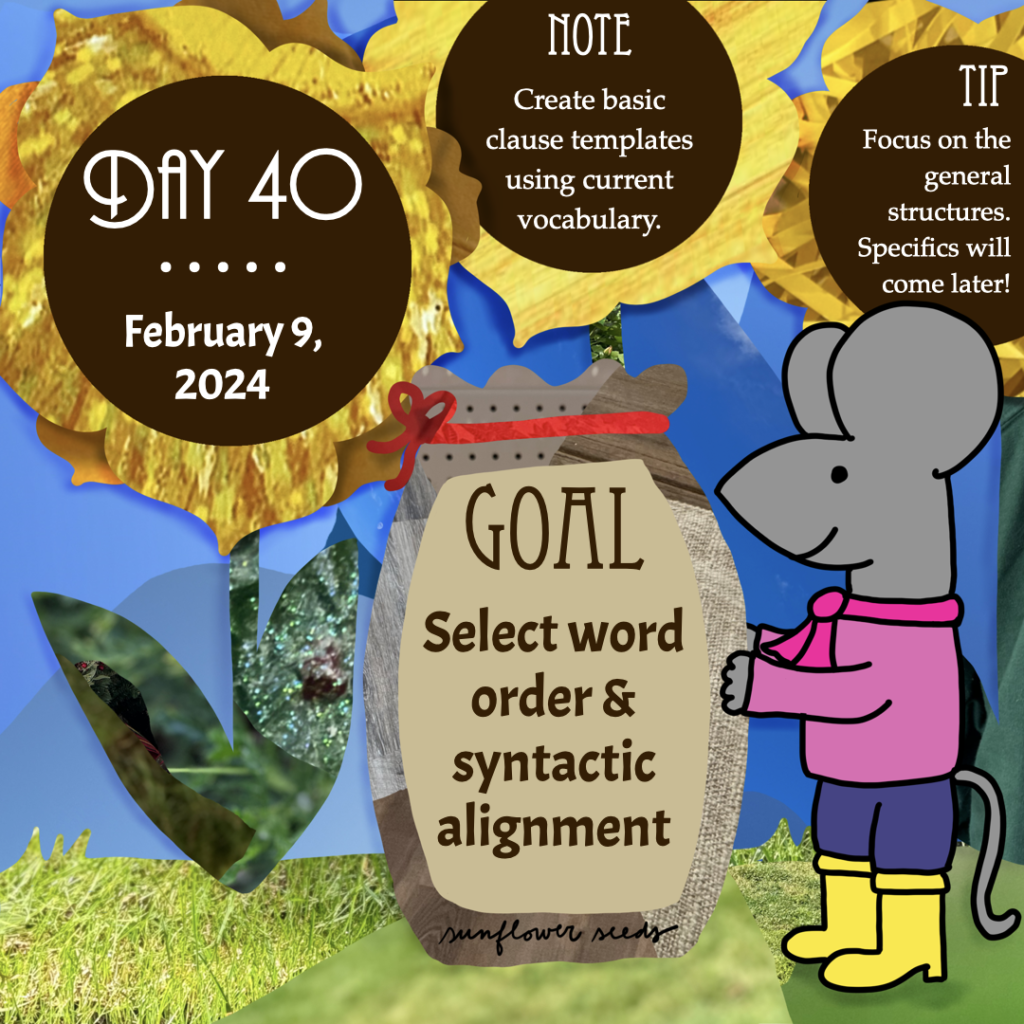
Goal: Select word order and syntactic alignment
Note: Create clause templates using current vocabulary.
Tip: Focus on the general structures. Specifics will come later!
Work focus: Organize/Plan/Structure
The first part of today’s prompt is to select the word order and syntactic alignment you want to use for your conlang. Once you do that, create some roughly drafted clause templates using nouns and verbs in your language to match your chosen word order. These templates are only to provide general structures and are not meant to be complete clauses—the details will be filled in as you continue creating features in your language. For now, focus only on clauses that use the nouns and verbs you have created.
For example, let’s say you have the following words in your language:
koni “flower”
shne “turtle”
ammu “to gather”
loh “to sleep”
If you chose nominative-accusative alignment and SOV word order, you could use these words to create the following clause templates:
S – O – V (transitive example)
shne koni ammu
“turtle flower gather”
S – V (intransitive example)
shne loh
“turtle sleep”
Notice these clauses in their translations are not completed—they are not yet fully grammatical structures because other grammatical features of the language have not been chosen or constructed.
Using the same very small lexicon here, let’s say you chose an ergative-absolutive alignment and want to have word order that could be called SVO but is perhaps better referred to as Agent – Verb – Patient/Subject word order.
A – V – P (transitive example)
shne ammu koni
“turtle gather flower”
V – S (intransitive example)
loh shne
“sleep turtle”
In this case, the subject of an intransitive verb grammatically patterns like the patient of a transitive verb, so the word order is different.
Again, these templates are not completed forms. As you continue making decisions about grammar, you will fill these forms out until they are full clauses. You can create as few or as many clause templates as you’d like, but I encourage you to have the following templates to work with:
- transitive verb with an animate subject/agent
- transitive verb with an inanimate subject/agent
- intransitive verb with an animate subject
- intransitive verb with an inanimate subject
Having these kinds of templates ready for use when you make larger decisions will help to ground your work because you will be able to fill in details as you create grammatical forms and see them in action, so to speak.
